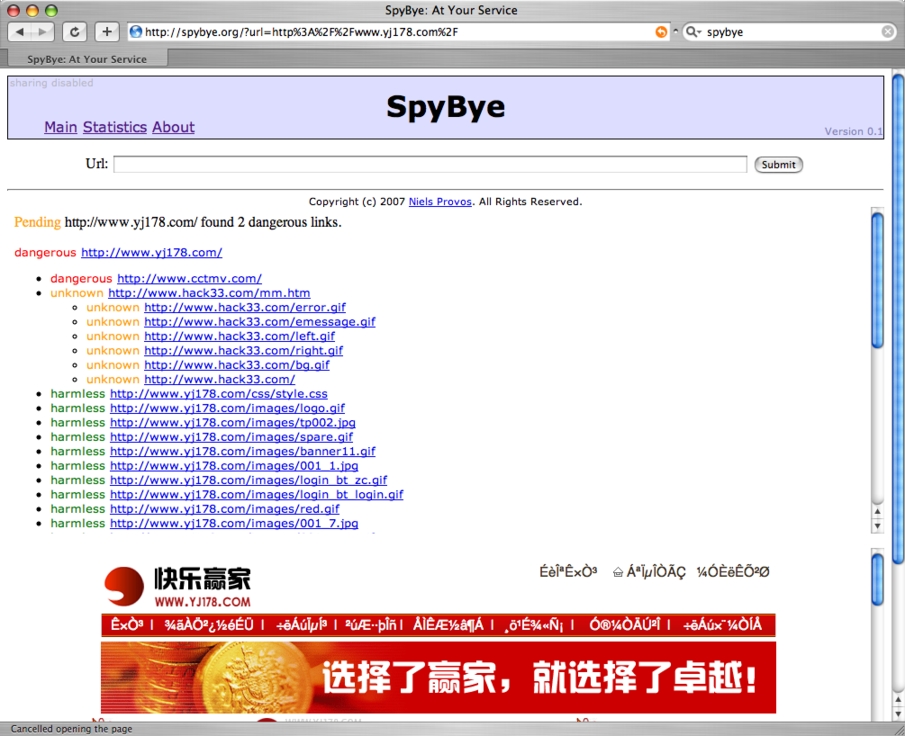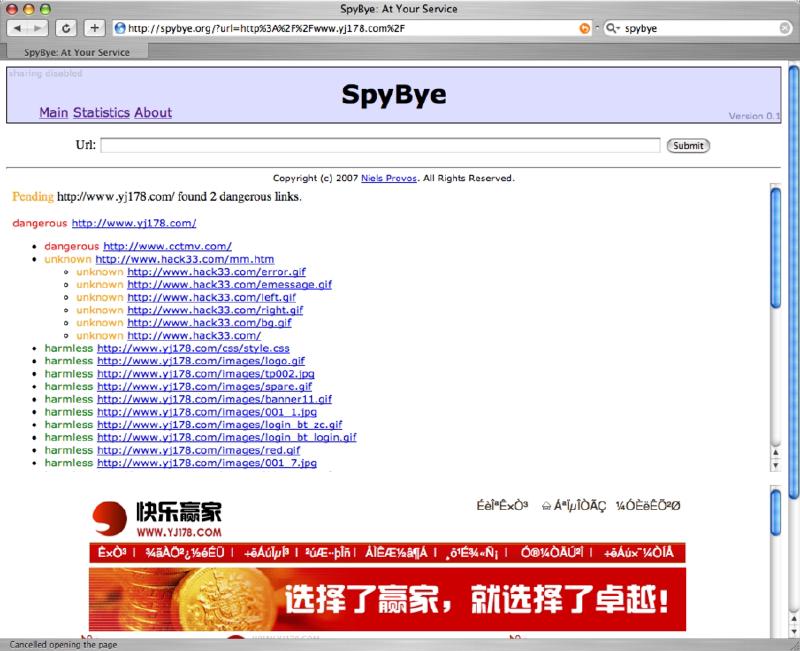
To try SpyBye, configure your browser to use www.spybye.org:8080 as proxy server and then go visit http://spybye.org/.
How does SpyBye work? SpyBye operates as a proxy server and gets to see all the web fetches that your browser makes. It applies very simple rules to each URL that is fetched as a result of loading a web page. These rules allows us to classify a URL into three categories: harmless, unknown or dangerous. Although, there is great margin of error, the categories allow a web master to look at the URLs and determine if they should be there or not. If you see that a URL is being fetched that you would not expect, it’s a good indication you have been copromised.
Why did you write SpyBye? It has become increasingly common for web sites to get compromised. This can happen either due to vulnerable web applications that you run or due to compromised servers via vectors completely out of your control. Nonetheless, it is important for web masters to be able to tell if their pages are dangerous to their users. SpyBye provides a very simple mechanism to determine how a site works on the HTTP level. This often gives us clues about potentially dangerous content. I hope that SpyBye can be of use to anyone who wants to verify if their web site could be compromised and dangerous. The unoffical explanation is that I needed some code to test libevent’s HTTP layer; writing a proxy exercises most of the code paths.
In a couple of days, SpyBye is going to be released as Open Source package, so that you can run your own proxy and check your pages.
Disclaimer SpyBye does not protect you from getting exploited yourself. It tries to take reasonable precautions to avoid infection while using it. However, ideally, you would run your browser in a virtual machine and revert to a clean snapshot when done. You have been warned. Today’s malware is capable of rendering your computer unusable - and empty your bank accounts!
